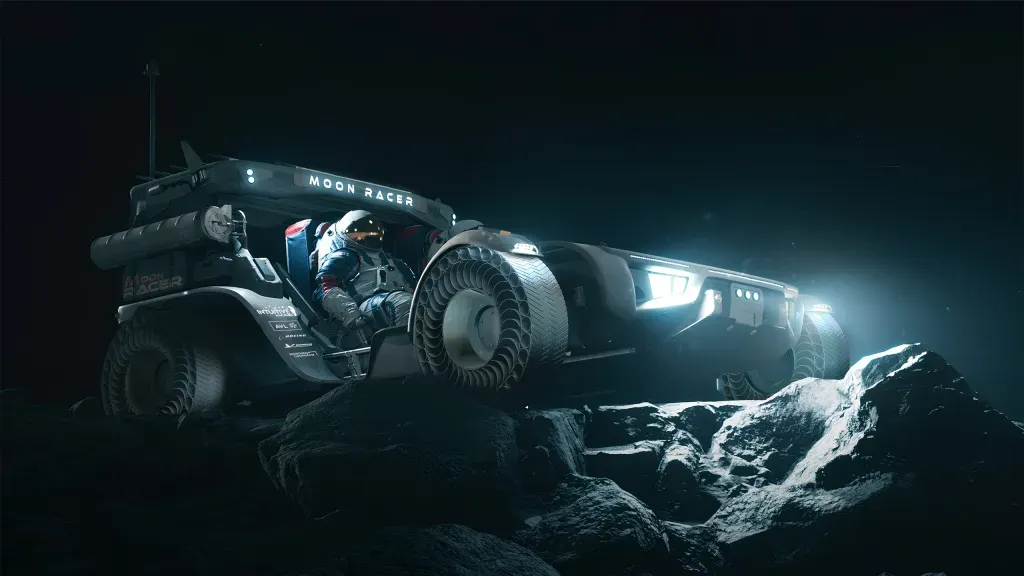The Most Extreme Artemis Moon Rover Has Deformable Wheels and a Size to Impress

 8 photos
8 photos






NASA plans to deploy the rover, generally called Lunar Terrain Vehicle (LTV), starting with the fifth Artemis mission, which at the time of writing is scheduled for departure no sooner than 2029. But because the thing is such a complicated project to complete, work on it has to start right away.
On Thursday, April 4, NASA said that the three companies involved in this critical stage are Lunar Outpost, Intuitive Machines, and Venturi Astrolab. Because of the complexities of the task, none of these companies are alone in this.
Lunar Outpost, for instance, it is working with Lockheed Martin, General Motors, Goodyear, and MDA Space. Intuitive Machines, the company that already put a lander on the surface of the Moon earlier this year, is doing the same with Boeing, Northrop Grumman, AVL, and Michelin.
As you can see, both these crews have at least a couple of veteran companies on their side. Not Venturi Astrolab, which is only betting on support from companies almost as young as it is, namely Axiom Space and Odyssey Space Research.

Its American offshoot is called Venturi Astrolab, and it has been around for about half the time. This crew is responsible for some truly insane vehicles, many of them concepts, and known to the world as the Fetish, Eclectic, or America.
But the rover these guys plan for the Moon tops them all, not only because it is meant to travel on the surface of other worlds but also because it should be a giant among all rovers ever made. In fact, says the company behind it, we’re looking at the largest rover to ever travel to the Moon (we're not given any specifics, though). It will also be the heaviest, as at over two tons of total mass, it weighs three times more than the Lunar Roving Vehicle (LRV) of the Apollo program.
The machine Venturi is working on is called Flexible Logistics and Exploration. That’s FLEX for short, and it’s a concept that was first presented as a full-scale working prototype in March 2022 – and that makes it the only Moon rover selected by NASA for further development to exist in physical form at the time of writing.
Just like the other two, the Venturi vehicle has to meet some strict design criteria as requested by NASA. First and foremost, it has to be able to support extreme temperatures that range from 280 to minus 280 degrees Fahrenheit (138 to minus 173 degrees Celsius). A hard thing to accomplish, especially when it comes to the wheels and electric batteries that will power the rover.

The FLEX, naturally, meets all those targets but adds a few extras of its own, because NASA is allowing each company to follow its own path and use whatever tech it has for the development of the LTV. So Venturi is doing just that.
The company will be using for the FLEX in-house developed batteries, and a set of wheels of the hyper-deformable variety. The design for them was presented last year at the Paris Air Show as a world first.
Because the rover is designed to travel at speeds of 12 mph (20 kph) over the Moon’s very uneven terrain, normal wheels would not have worked. So Venturi’s ones are deformable thanks to the fitting of 192 cables that act as spokes and springs installed on the outer rim.
Unlike the competing designs, the FLEX has already undergone thousands of hours of laboratory and field testing, which in my book kind of gives it an upper edge.
NASA gave the three companies taking part in the program a year to come up with a relatively complete design. It will then select a winner, and it will have the company that makes it test it on the Moon before handing the controls over to the astronauts of the Artemis V mission.
The space agency plans to spend some $4.6 billion on Moon rovers for the duration of the program. Venturi Astrolab says its cut is worth almost half of that, $1.9 billion.


 United Kingdom
United Kingdom Argentina
Argentina  Australia
Australia  Austria
Austria  Brazil
Brazil  Canada
Canada  Germany
Germany  Ireland
Ireland  Italy
Italy  Malaysia
Malaysia  Mexico
Mexico  New Zealand
New Zealand  Poland
Poland  South Africa
South Africa  United States
United States 























